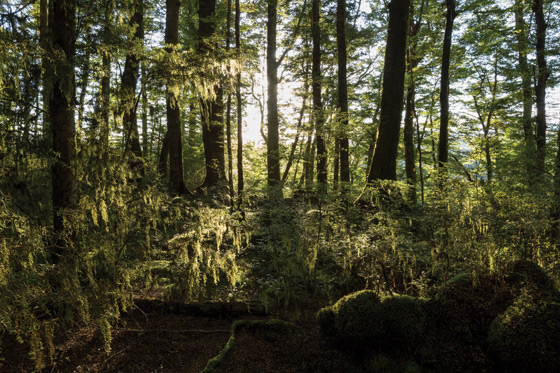
November wind sweeps the dregs of autumn over the rim of the world. The last hag apples of the season hang on naked branches above the reek of fermented fruit. Low on the haunches of the year, rotting cabbage is dug back into bittersweet dirt. The harvest is gathered in a shady cellar. Burgundy braids of soft-necked garlic, baskets of Iroquois white corn, and blind-eyed seed potatoes dream in the dark.
Bewitching as bounty is, I long for the blank reprieve of fallow time. Here fallow is both an adjective and a verb, a potent word with feeder roots fanning out into the Old English fealh or “arable ground.” To “fallow a field” is to lay land open with a fanged plow and leave it bare and unsown. In ancient Jewish agricultural practice, every seventh season a sabbatical, or fallow year, was observed. Mandated by old law, unplanted ground lay fallow, renewed by rest and radical absence.
In this dormant season at the margin of winter, fallow time is courted by turning a deaf ear to the last siren song of farm and field. I travel north to a place of refuge beyond the cultivated row, a favorite hidden spot, tucked into the rough folds of Bolinas Lagoon. This lagoon is a tidal estuary—a drowned valley thousands of years old, riven open by the San Andreas Fault, which runs directly through the sunken trough of brackish water.
Not far from the shoreline of the lagoon is a giant horse chestnut, or California Buckeye tree, growing at the shadow fringe of steep oak and fir woodland. The vast limbs of this tree are festooned with pale green 10-foot-long boa scarves of Old Man’s Beard lichen, Usnea barbata, one of my favorite California native plants. The center of the buckeye tree is splayed open by the weight of wind and age, its core of weathered wood shaped like a well-worn nest lined with the soft duff of fallen leaf mold. I climb up into this sylvan aerie and disappear.
The primitive lichen growing above me summons the original mind of the place. I remember a treasured line cited by the classic Chinese scholar and translator David Hinton in his “field guide to mind and landscape,” Hunger Mountain: “The ten thousand things all emerge from a loom of origins,” as the Chinese monk and poet Chuang Tzu said. Several hundred million years old, prehistoric lichen is not a plant as much as a symbiotic community, its own loom of origin where primordial algae is woven together with strands of the fungal network. In a blue-green web of photosynthesis, algae contribute sugar, nitrogen, and other vital nutrients to the lichen while fungi provide structural support and the capacity to retain water. The interwoven fabric of every lichen is stronger than its individual strands.
All lichens are early pioneers. They colonize raw matter and dissolve it with weak organic acid, initiating the circle dance of ecological succession. Slow-growing, long-lived intrepid explorers, lichens inhabit every growing niche on Earth, from the salt-encrusted sea rock and buckeye branch of Bolinas Lagoon to frozen Arctic tundra and scorched desert. Lichen softens the stony gaze of Mount Rushmore’s presidents and covers the Mayan temples of Tikal.
Out of some 20,000 cataloged species of lichen in the world, more than 1,000 grow in California. Old Man’s Beard lichen is a vast community essential to the pharmacopoeia and pantry of California’s first peoples and provides shelter and sustenance for animals and insects. Usnea barbata has also been used to bandage the wounds of war and to diaper babies, is distilled into pale perfume and used to create vivid natural dye. Over the last 1,600 years, Old Man’s Beard lichen has served as a modern herbal remedy for lung and upper respiratory infections and a treatment for urinary tract disorders.
Because lichens absorb most of their mineral nutrients from rainwater and living air, they are a clear indicator-species of elevated atmospheric pollution. Especially vulnerable to toxic elements, lichen absorbs chemicals without the ability to excrete pollutants. The toxins deteriorate chlorophyll inside algal cells, starving and poisoning the fungal network in the inner fabric of the lichen. Tissue analysis of lichen from the Los Angeles Basin reveals a species loss over the last century of more than 50 percent, due to elevated air pollution.
Although the Old Man’s Beard lichen of Bolinas Lagoon is vibrantly healthy, Usnea barbata is interwoven in a complex widening circle pattern with the endangered lichens of the world. Almost 30 years ago across Russia and the Ukraine, hundreds of miles of lichen were poisoned by radioactive fallout and Cesium-137 from the nuclear meltdown at Chernobyl. Seventy thousand reindeer dependent upon this lichen for their primary nourishment were destroyed in Sweden to protect their human community from radioactive contamination lodged in reindeer meat. The escalating concentration of poison fire isotopes present today in lichen and in the living body of land and water following nuclear disasters in Chernobyl and Fukushima, Japan, indicates biological magnification radiating out through entire world systems.
At sundown, winter evening drops a dark indigo net over the tidal waters of Bolinas Lagoon. Long strands of Old Man’s Beard lichen lift and fall, pale green and ghost grey, on the outbreath of salt wind. Fallow time deepens. Mind and landscape are made of the ten thousand things, all emerging from a loom of origins and, as the poet-monk Chuang Tzu reminds us, all vanishing back into it.
Thank you for subscribing to Tricycle! As a nonprofit, we depend on readers like you to keep Buddhist teachings and practices widely available.